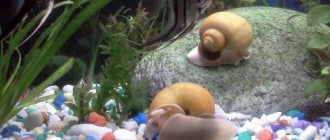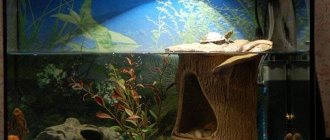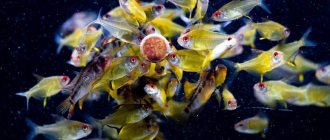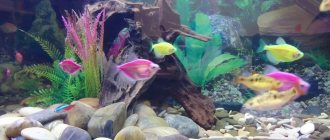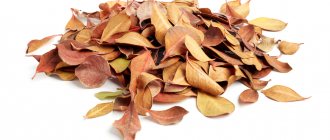Greens are the basis of a snail’s diet in nature, so when keeping it at home, you should try to ensure that greens are present in the snail’s bowl as often as possible.
Summer has come, and therefore it’s time to diversify the snail’s diet with wild, juicy herbs.
So, let’s figure out what to feed an African pet in completely non-African conditions. What grass can and cannot be given to Achatina snails?
Does a snail need exotic herbs?
If you have the opportunity to bring herbs from wild snail habitats, then why not? Tanzania, Ethiopia and some other countries are the homeland of Achatina.
In fact, many snails, and Achatina in particular, are one of the most invasive species precisely because they are undemanding when it comes to their diet.
That is why they are prohibited from being imported and kept as pets in a number of countries (the USA, for example), where the climate allows them to live well, reproduce quickly and cause significant damage to agricultural crops. In Russia, snails will not survive the winter, so this species cannot be found in the wild.
However, this does not mean that the snail is immortal and you can give it everything.
So, let's start with what is possible.
What else can you feed snails?
The daily diet should be varied. If you feed Achatina with the same food for a long time, they will get used to it and refuse other food.
To strengthen the shell, snails need to be given cereals and cereals:
- Hercules;
- Oatmeal;
- Millet cereals;
- Buckwheat;
- Hercules;
- Corn;
- Barley;
- Barley;
- Lentils;
- Rice;
- Sunflower seeds;
- Flax seeds;
- Sesame;
- Cereals.
It will also be useful for snails to feed cottage cheese, oat bran, mushrooms, dry cookies, and meat.
The most important stage in feeding Achatina snails is mineral feeding. If there is a lack of minerals, the snail will get sick and growth will stop. You can also observe deformation of the shell, delamination, damage, and cracks will appear.
To form a strong and healthy shell, snails must be fed:
- Eggshells;
- Shell rock;
- Feed chalk;
- Limestone;
- Sepia;
- Gammarus;
- Daphnia;
- Cuttlefish shell.
Allowed wild herbs
Let me give you an example of the most common herbs that are easy to collect in the forest:
- Dandelion leaves
- Clover leaves
- Burdock
- nettle leaves
- Plantain leaves
Clover
Dandelion leaves
These herbs are safe. You need to collect them in the forest. And in no case near highways. I don’t recommend it in the yard either - it’s also dirty, the air is polluted with car exhaust, and people often walk their dogs on the grass - you never know what will get there along with the grass.
Naturally, nettles should not be given with stems or freshly picked. Let it sit and wash it well. Actually, the same procedure should be done with all other herbs.
Burdock - in my photo it is quite large, it is better to take young burdock leaves
Plantain
My Chamomile’s personal TOP of wild herbs is:
- Clover
- Plantain
- Dandelion
- Nettle
- Burdock
She eats burdock very sparingly, when she is hunting, she eats nettles lightly, and dandelion sparingly. The plantain is more cheerful and has only young leaves. Clover is my favorite (and hardest to collect). I deliberately do not collect any additional herbs, since these five are enough to diversify the summer diet.
I recommend collecting only young herbs. Huge stringy plantain leaves are unlikely to please snails.
Plants for a terrarium with Achatina
It is better to place live plants in the terrarium. But artificial ones are also acceptable. In terms of plants, it must be taken into account that the African snail is a land animal. Therefore, plants carefully planted in a snail house will most likely end up dug up and eaten. An option is to install them in pots (to protect the roots from snail teeth). Or - compact the soil around the plant with snags and bark.
Suitable plants:
- all types of ferns and tradescantia, saxifrage - they are resistant to digging;
- cereals and lichen;
- rice sprouts, mustard sprouts;
- plantain.
You cannot plant:
- thorny vegetation;
- poisonous vegetation - dieffenbachia, ivy, aloe;
- plants of the xerophyte genus (wormwood seedlings, feather grass).
It is always better for any animal if the home conditions are close to the conditions of its natural habitat. Therefore, it is necessary to equip a terrarium for Achatina based on these considerations. Remember, taking snails home means being prepared to care for them properly, since their life expectancy is quite long.
Other interesting articles
- What plants to plant in an aquarium with angelfish Plants for angelfish Angelfish - these fish of South American origin - love it when the environment...
- What plants to plant in an aquarium with barbs Plants for barbs Everyone wants, in addition to beautiful fish, in his aquarium to also have ...
- What plants to plant in a 25 liter aquarium List and description of plants for small aquariums A small decorative pond can look no worse...
Forbidden wild herbs
These include all herbs that are poisonous to humans, as well as some medicinal and aromatic herbs. There is a high probability that the snail will refuse such herbs on its own, but experiments are useless.
For example,
- sagebrush
- hogweed
- ambrosia
- flowers of wild plants
- oregano
- St. John's wort
- thyme
- yarrow
Some aromatic herbs are not poisonous and will not cause harm, but they also have little benefit. In nature, snails prefer neutral and tender juicy herbs.
The main rule is that if in doubt, give up the idea of feeding the snail with new interesting food. Believe me, the variety that can be found among the proven options is quite enough to make the snail happy, and you, as the owner, do not worry about its health and satisfaction with the food variety. By the way, in addition to herbs, there are also berries, fruits and vegetables.
Features of feeding
How do snails eat?
Snails feed using the radula. The radula is a chitinous ribbon on which a huge number of teeth are located. Snails ingest microscopic fibers, crush them with their teeth and send them into the esophagus.
When and how much to feed
- Achatina snails are predominantly nocturnal. They sleep during the day, and in the evening they begin to be active. Therefore, you need to feed Achatina in the evening.
- Young snails are fed once a day, adult snails 2-4 times a day.
- Taste preferences, diet and amount of food consumed by snails depend on age. At home, snails are selective and capricious, so the owner needs to take into account food preferences and adapt.
- Food for snails is left in a bowl or on a small tray. Often large lettuce leaves are used instead of a bowl.
Permitted cultivated herbs (greens)
These include greens, which we ourselves often add to salads or eat just like that, as well as tops:
- leaf lettuce - frillis, oakleaf, the most common - any cultivated leaf lettuce
- dill
- parsley
- carrot and beet tops
- microgreen sprouts - for example, pea greens or mung beans
- asparagus
- spinach
If you buy microgreens for a snail, look at what herbs it is grown from. If it is mustard greens, you should not give it. Try it yourself - if the grass is bitter or has a mustard taste, you should not give it to the snail.
Dill
In addition to the above, you can include leaves of fruit trees and berries in your diet:
- raspberries
- cherries
- apple trees
- strawberries and wild strawberries
In limited quantities you can:
- celery
- cilantro
- basil
- fenugreek herb
According to my observations, my pet is indifferent to such herbs, which is why I don’t collect them. And in general, the leaves of trees are mostly dry, not juicy, which is why snails don’t like them.
Iceberg lettuce
The TOP 3 of cultivated herbs are:
- Lettuce - any options
- Microgreens
- Beet and carrot tops
She is more indifferent to other herbs and only eats when hunting.
What do forest snails and land snails eat?
The basis of nutrition for land snails is plant food. They love vegetables, fruits and greens. If the plant is hard, then it is better to grate it; if it is soft, cut it into slices. Land snails feed on fresh plants. They do not eat boiled or steamed vegetables. Especially with salt. Salt is strictly contraindicated for all snails.
In addition to plants, land and forest snails feed on protein foods. This can be crushed puree from seafood, meat, as well as special food for fish, gammarus and daphnia. Don't get carried away by giving them similar food every day. A few times a week is enough. The list of what land snails eat includes a fairly large list of fruits and dried fruits. Most loved:
- grape;
- watermelon;
- melon;
- mango;
- papaya;
- strawberries;
- a pineapple;
- pear;
- apricots;
- plum
Vegetables they prefer:
- potato;
- cabbage;
- carrot;
- eggplant;
- tomatoes;
- pumpkin;
- onion;
- peas;
- corn;
- beans;
- cucumbers
To strengthen the shell and general physical development of land snails, it is necessary to feed them with eggshells, which are rich in calcium, which is beneficial for all gastropods. But calcium can also be given in the form of a special calcium mixture, adding it to vegetables and fruits. Land snails will not refuse a portion of tasty cottage cheese.
Prohibited cultivated herbs
As I already said, these include all those that have a pronounced peppery, garlic, mustard taste or any other strong aroma:
- watercress – has a mustard flavor
- wild garlic leaves – spicy taste
- arugula – has a mustard flavor
- rhubarb – tart taste
- Sorrel is sour and also blocks the absorption of calcium.
- green onions - spicy
- garlic leaves – contain many essential oils
- Potato tops – may be poisonous as they contain solanine
- tomato tops – very aromatic, poisonous to snails
- horseradish leaves – spicy, pungent
- Radish leaves are sometimes bitter, so it’s better not to risk it.
What foods are prohibited for snails?
6 It is strictly forbidden to feed the snail spicy, sweet, smoked and pickled foods.
SALT is certain death for a snail
7 Oranges and lemons contain acid, which, with prolonged contact, injures the delicate body of the snail and destroys its shell. Therefore, it is better to refuse them or give them very rarely and in small portions.
8 Be careful with nightshade vegetables. Do not feed Achatina with unripe tomatoes or “green” potatoes. Boil potatoes and eggplant before giving them to the snail. 9 White flour and flour products (especially PASTA) are contraindicated for shellfish. Their digestive system cannot digest them, which leads to intestinal obstruction and death of the animal.
How to feed and in what quantities
Any herbs, especially forest herbs, should be thoroughly washed several times, rinsing the leaves well with your fingers. This is done in order to exclude the presence of parasite larvae, worms, and so on. There is no need to give leaves with holes - they were probably eaten by pests. Remove the stems too; your pet needs leaves, not flowers and stems.
You don’t have to worry about the quantity – the snail doesn’t overeat. Place the usual amount of herbs per day and remove any leftovers promptly.
In total, we find that up to twenty absolutely safe herbs can be included in a snail’s diet. This is more than enough for the snail to receive all its nutrients. Choose those herbs that the snail eats with pleasure and do not experiment with exotic ones.
By the way, all of the above permitted herbs can be dried for the snail for the winter.
Keeping the Achatina snail (Terrarium)
A terrarium for Achatina can be made from a simple aquarium. The minimum size is 10 liters per snail. The larger the aquarium, the larger your snail will grow. The terrarium must have a lid, because snails can crawl out of it. It is advisable to arrange small holes in the lid for better gas exchange. As a last resort, you can simply lift the lid to create a small gap. You need to put bedding on the bottom of the aquarium. The bedding can be Begonia soil, or ideally a coconut substrate 5-7 cm thick. You can build a small bath with fresh water; Achatina loves to swim. The main thing is that the depth of the bath does not allow the snail to choke. In general, Achatina crawl well under water, but if it accidentally falls into the bath from above, a small snail can drown from fright. You also need to make sure that the bath does not turn over if the snail starts to burrow into the soil next to it, otherwise the water will spread out, which is not good.
The temperature and humidity required by Achatina are approximately the same as those in an ordinary city apartment. Soil moisture is determined empirically. If the snails sit on the walls of the terrarium all the time, it means there is too much water. If they prefer to be sealed (the evidence is hidden in the sink and closed with a lid), on the contrary, it is too dry. When the soil moisture is normal, snails crawl along its surface at night and often burrow into it during the day. To maintain humidity, it is enough to spray the soil and walls of the terrarium with a spray bottle twice a day.
To awaken a clogged snail, you can pour water over its mouth and carefully remove the cap, or simply place it in a terrarium with normal humidity. It is recommended to wash the terrarium at least once a week. The exception is a terrarium with a clutch of eggs, which must be cleaned without water so as not to change the humidity and not damage the clutch.
It is better to keep small snails without soil, covering them with cabbage or lettuce leaves, thereby increasing the chance of the snail finding food and making it easier to care for the terrarium.
Why does a snail need calcium?
10 To build a strong and beautiful shell, the African snail needs calcium. The main sources of calcium are: ground eggshells, feed chalk, cuttlefish shell. You need to be careful with cuttlefish shells, as they may contain large amounts of salt. Therefore, soak the shell in water for several hours. Edible chalk can now be bought at a pet store, but it has nothing in common with the multi-colored drawing crayons that are sold in office supplies; colored crayons should not be given to Achatina.
Eggshells are an ideal source of calcium.
Raw shells are softer and are better absorbed by the snail than boiled shells. Washed and dried raw shells can be ground in a coffee grinder (about 7 seconds), crushed in a mortar, or simply rolled several times with a rolling pin.
How to prepare calcium mixture
- Buckwheat – 100 gr.
- Oatmeal (Hercules) - 100 gr.
- White rice - 80 gr.
- Wheat cereal - 80 gr.
- Eggshells - 4 pcs.
- Edible chalk - 30 gr.
- Soaked and dried cuttlefish shell or sepia.
Grind all the ingredients one by one in a coffee grinder or blender, then mix everything and place in a dry, airtight container. The yield of the calcium mixture is about 800 g. Read recipes for healthy feeding for the proper growth and development of snails here .
When to give food
Achatina snails are nocturnal mollusks. During the day they sleep, buried in the ground, and in the evenings they become active and quickly crawl around their home, hoping to find something edible. That is why it is advisable to feed snails in the evening or at night.
It is better to feed the snail in the evening; be sure to place the food on a plate.
It is better to let the snails eat on a plastic tray with low edges or on a saucer, which can be easily removed after dinner, which allows you to maintain the cleanliness of the molluscarium (aquarium). It is undesirable to place food on the ground, as this leads to contamination and rapid spoilage. Achatina does not eat all the food at once, trying to prolong the pleasure. But with sufficiently high humidity, necessary for the normal functioning of shellfish, the food quickly begins to rot and become moldy, so after some time it is better to remove the remaining products.
What is contraindicated for Achatina
Salt is strictly contraindicated for snail
One of the basic rules of care is knowledge: snails do not eat what people eat and prepare for themselves. Especially it concerns:
- Salty food.
Salt, even in the smallest amount, is detrimental to Achatina. The owner should get into the habit of reading the ingredients of any purchased food and under no circumstances give snails food that contains salt.
- Flour products.
It is no less deadly and harmful, for example, pasta.
- Newspapers.
One of the amazing habits is that snails eat newspapers, and whenever possible they are not averse to eating them. This should not be allowed, as printing ink can lead to the death of an illegible pet.
Eating sweets, citrus fruits, fried, smoked, pickled, spicy, and sour foods is contraindicated for shellfish. It is not recommended to give large pieces of any product with loose pulp, as the snail can burrow into it and suffocate.
Complete food table for snail.
| Fine | Neutral | Badly | |
| VEGETABLES | cucumber, tomato, zucchini, bell pepper, pumpkin, carrots, squash, corn, peas, beets, Chinese cabbage, white cabbage, cauliflower. | turnips, rutabaga, mushrooms, boiled potatoes or eggplant. | radish, radish, onion, garlic, ginger, hot pepper. |
| FRUITS AND BERRIES | apple, pear, apricot, peach, cherry, banana, raspberry, strawberry, plum, watermelon, melon, coconut. | kiwi, cherry, tangerine, blackberry, persimmon. | orange, lemon, gooseberry, currant, quince, viburnum, cranberry, sloe, cherry plum. |
| GREENS AND HERBS | dill, parsley, spinach, lettuce, dandelion, nettle, plantain, clover, burdock, chamomile. | basil, cilantro, celery, mint, thyme, St. John's wort, tansy. | sorrel, wormwood, ambrosia. |
| GREATS AND SEEDS | barley, corn, rolled oats, buckwheat, rice, pearl barley, lentils, flax, poppy, sesame, sunflower seeds. | boiled beans. | semolina, peanuts. |
| FEEDING | cuttlefish shell, food chalk, shell rock, egg shells, daphnia, gammarus. | dried fruits, meat and bone and fish meal, Reptocal. | dog food, candied fruits and berries, calcium gluconate, calcium D3. |
| ANIMAL PROTEIN | chicken, turkey, shrimp, squid, mussels, rabbit. | milk, kefir, cottage cheese, fish, eggs. | pork, beef, lamb, sour cream, cream. |
| OTHER | leaves of oak, birch, linden, raspberry, apple tree, freshly squeezed juices from pumpkin, carrots, peach, pear. | baby food without salt and sugar, meat puree without spices and preservatives. | salt, sugar, bread, pasta, canned food, fried, sour and fatty foods. |
Experiment, offer your pets a variety of foods, they themselves will tell you which foods they like best.



